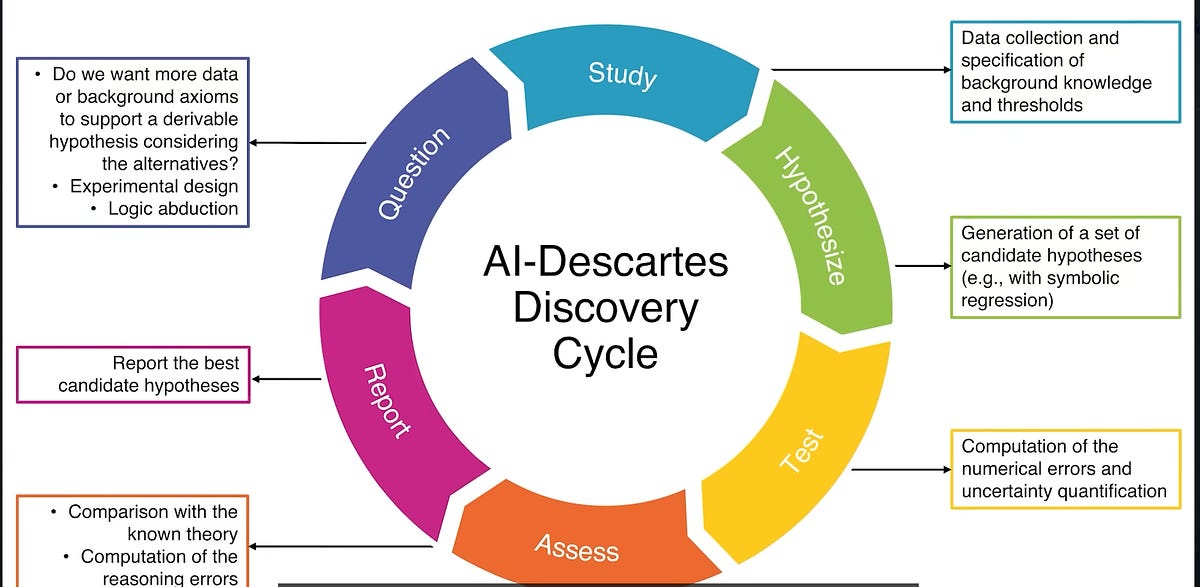Should You Make Room for AI Training in Your Teaching?
Thinking in general terms about assignment design in the age of AI.

[image created with Dall-E 2]
Welcome to AutomatED: the newsletter on how to teach better with tech.
Each week, I share what I have learned — and am learning — about AI and tech in the university classroom. What works, what doesn't, and why.
Let’s take a look at how, in general, professors should go through the process of designing assignments in the age of AI.
Last month, I published a piece on why preventing AI plagiarism leads to skilled AI users. My contention was that, “[b]y limiting students to learning the essentials of a subject, AI-immune assignments put students in a position to better evaluate products and performances in the domain of that subject, whether they are produced or performed by the student themselves, someone else, or an AI tool.”
My idea was that sometimes an AI-free environment is needed to cultivate students’ judgment about the quality of a completed task, even if they will regularly use AI tools to complete tasks like it. However, I granted that AI will be an absolute game-changer for many of our fields — and we should not lose sight of our role in training students to use it. I noted that there are two upshots of this line of reasoning, both important:
1. We, the professors, should identify those bits of information and knowledge, as well as those skills and methods, that students need to acquire or develop regardless of the role of AI in their future careers and lives; and
2. We should identify those bits of information and knowledge, as well as skills distinctive of our professions, that students can and should use AI tools to acquire and develop.
This week, I will try to express how, in general, we ought to think of the process of designing assignments such that we balance the above two upshots. I will then link this discussion to our earlier discussions of AI plagiarism and AI-immunity.
🛠️ To Train AI or Not to Train AI?
As with any tool that can help our students complete the tasks typical of our fields, AI tools challenge us to reflect on the degree to which we should focus on teaching students how to use the tools to complete the tasks, as opposed to focusing on teaching students to complete the tasks without the tools. Since our teaching time — and that of our students — is finite, time spent one is time that we cannot spend on the other.

The zero-sum balancing act (a gif I made with ChatGPT4).
When deciding whether to teach students to use AI tools or complete tasks without them, many factors should be considered, including:
Relevance of the Task: If a task is central to the discipline being taught and understanding the process is important to mastering the discipline, it may be better to teach the task without using AI tools. This will ensure students gain a deeper understanding of the underlying principles.
Complexity of the Task: If the task is highly complex and requires a lot of time and resources to complete manually, but it can be completed with AI, it might be better to teach students how to use AI tools to complete it.
Future Demand: It is essential to consider the future demand for a certain skill in the job market. If the industry is moving towards AI-assisted tools and technologies, teaching the use of these tools can provide students with more relevant skills for their future careers.
Adaptability: AI and technology are rapidly evolving fields. Teaching students how to use specific tools may be less valuable in the long run than teaching them how to adapt to new tools and technologies as they emerge.
Student Background: Consider the background and the prior knowledge of the students. If students already have a strong understanding of the basic principles, it might be more beneficial to introduce AI tools. Conversely, if students are new to the field, it might be more helpful to first teach them to perform tasks manually.
Availability of AI Tools: If AI tools are expensive or not readily available, teaching the manual method may be more practical. The technological capabilities of the institution, students, and faculty are crucial.
Training and Support: The availability of training and support for faculty and students is essential to ensure effective use of AI tools. The learning curve associated with each tool should also be assessed.
Accessibility and Inclusivity: AI tools should cater to students with varying abilities and needs, promoting an inclusive learning environment.
Data Privacy and Security: AI tools can often handle or produce sensitive data. It is crucial to ensure these tools comply with data privacy and security regulations.
Integration with Existing Systems: The compatibility of AI tools with current systems like Learning Management Systems (LMS) and grading systems affects their overall usability.
Customizability and Flexibility: AI tools that offer customization options can be more easily adapted to specific learning objectives and course requirements.
Student Preference and Expectations: Students' attitudes towards and comfort with using AI tools can significantly impact their learning experience.
Many have argued that a basics-first approach, where students are taught the fundamentals and principles first, and then introduced to AI tools as a way to enhance or streamline these tasks, is the best approach. This may be true in general. However, my view is that it cannot be determined from the armchair whether it is true of a given professor teaching a specific course in its unique context.
Each of us must weigh factors like those in the above list in order to determine whether we should teach students to use AI tools to complete the tasks we expect they will need to complete in their careers and lives, as well as which assignments we should use to do so.
💻 Why is AI Tool Expertise Needed?
Although this should be somewhat clear already, I think it it bears repeating: we cannot effectively carry out this weighing process without a good understanding of the capabilities of AI tools relevant to the tasks of our field. Likewise, we cannot effectively teach students how to complete tasks with AI tools without having a good understanding of the tools themselves.
So, each of us should be dedicating a portion of our regular reading to AI technology in education and our specific fields of expertise. Furthermore, since hands-on experimentation is crucial to understand the capabilities of AI tools as they evolve, we should be trying out different AI tools, exploring their features, and evaluating their potential for our specific teaching needs.
Many AI applications offer trial versions, tutorials, or demo projects that can be used for learning purposes. As you experiment, consider the learning curve for students and the feasibility of incorporating the tool into your curriculum.
You could create small projects or exercises to test the tools in a simulated classroom environment. By doing this, you will not only gain practical knowledge of the tools but also develop an understanding of potential challenges and issues that students might face.
🗺️ Assignment Development, AI Edition
The preceding can be integrated into our earlier discussion of how to conceptualize the process of designing pedagogically appropriate assignments in a way that is sensitive to the challenge of AI plagiarism.
After we have learned more about AI tools and determined whether we should teach students how to complete a given task with the use of AI tools, we then either develop an assignment to teach them how to use those tools or develop one to teach them how to complete the task manually. If we need to do the latter, ideally we either ensure students cannot access AI, make the assignment AI-immune in itself, or pair it with a second assignment that incentivizes students to do both without AI.
Here is a new flowchart that expands on the flowchart from our earlier discussion and contains all of these steps:

The process of assignment design in the age of AI.
🏆 An Update on the AI-Immunity Challenge
Next week, we plan to post our first piece on the results of our AI-immune assignment challenge.
We will continue to receive and review assignment submissions for the next several weeks, so please review the challenge parameters and submit a take-home written assignment if you believe you have one that is AI-immune.



